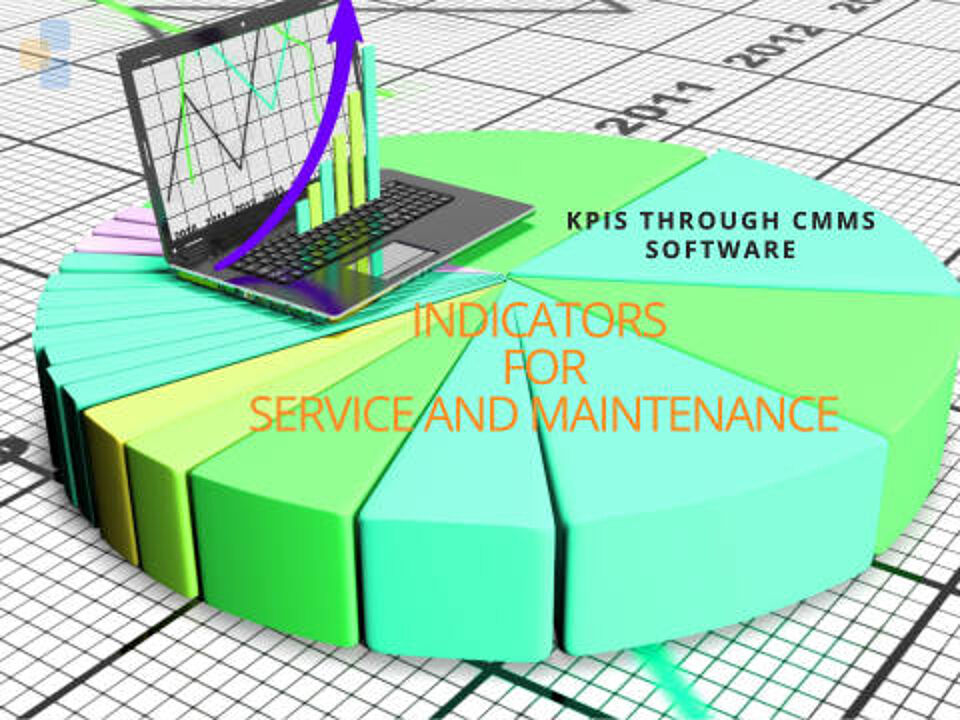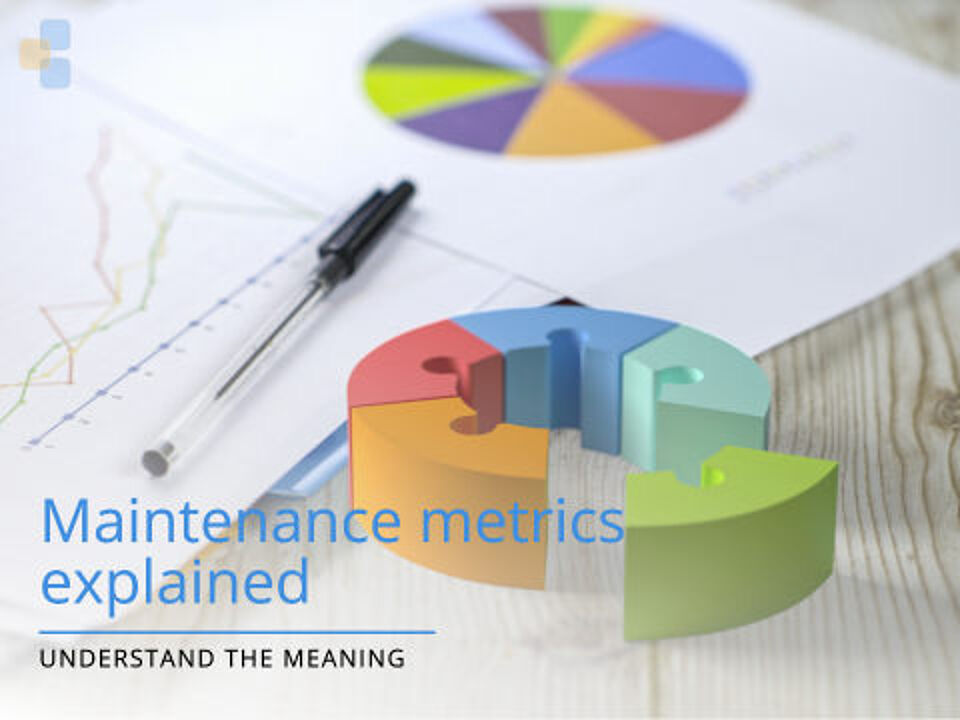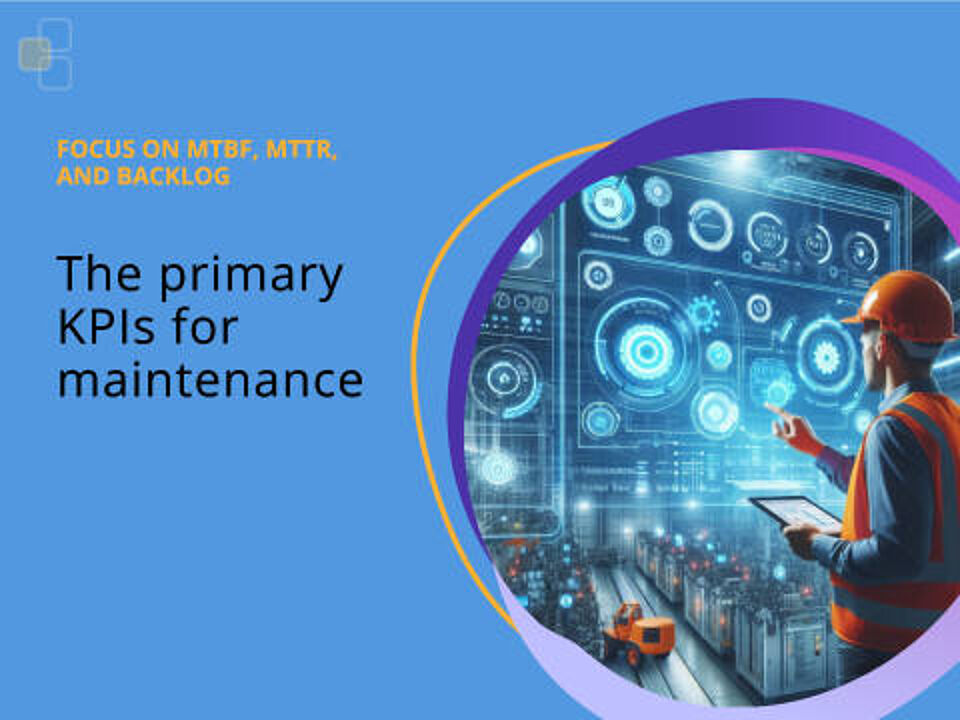
Author: Jochen Möller (CEO and CoFounder of EcholoN)
Creation: 09.01.2025, last change: 13.02.2025
Table of contents
What are maintenance KPIs?
Maintenance metric what is it?
Differentiation between key performance indicators for maintenance and KPIs for maintenance
How can you develop KPIs for maintenance and servicing with SMART?
Example of relevant KPIs for maintenance
The primary KPIs for maintenance
Key performance indicators (KPIs) are a highly useful tool for evaluating the efficiency and effectiveness of maintenance and servicing processes. They enable companies to monitor machine downtime, repair times, maintenance backlogs and costs.
By using modern technology, such as a computerized maintenance management system (CMMS), these KPIs can not only be tracked, but actively optimised. In this article, you will learn how to define relevant KPIs and analyse maintenance activities, and why they are an important factor for the long-term success of your business.
What are maintenance KPIs?
Maintenance KPIs (key performance indicators) are central performance indicators that make the success of maintenance and servicing targets measurable. They combine measurable key figures, such as downtime, with clearly defined benchmarks, such as a 25% reduction in downtime. This not only makes the progress of a project visible, but also allows its effectiveness to be evaluated.
Why is measuring maintenance KPIs important?
Maintenance KPIs provide organisations with a data-driven approach to analysing, monitoring and improving maintenance processes. They help to set clear objectives and measure progress by establishing indicators. Without setting these metrics, it would be difficult to objectively evaluate the effectiveness of maintenance strategies.
The characteristics of good maintenance KPIs
A good KPI is based on the SMART principle:
- Specific: the objective must be clearly and unambiguously formulated.
Example: reduce the average repair time of a production plant. - Measurable: it must be possible to track progress using specific data.
Example: reduce the mean repair time (MTTR) from 3 hours to 2 hours. - Achievable: The KPI must be realistic and achievable with existing resources.
Example: Increasing machine availability by 50% within a month might be unrealistic, but an increase of 10% is achievable. - Realistic: The objective should reflect the current conditions and capabilities of your team.
- Time-bound: A clear timeframe must be defined to achieve the goal.
Example: ‘Increase uptime by 15% in 6 months.’
Examples and Quantifications of Maintenance KPIs
- Reduce machine downtime:
Target: Reduce average downtime by 20% in the next quarter. - Improve preventive maintenance compliance:
Target: Increase maintenance compliance from 85% to 95% within one year. - Increase mean time between failures (MTBF):
Target: Increase MTBF by 15% within 12 months

What is a maintenance metric?
Maintenance metrics are key performance indicators that play a crucial role in monitoring the condition and efficiency of maintenance processes. They serve as objective metrics to evaluate employees, machines, processes and resources, all of which directly or indirectly influence the achievement of objectives. It's not just about numbers - it's about insights that make operations more efficient and reliable.
Common maintenance metrics at a glance:
- Mean Time to Repair (MTTR):
The MTTR indicates the average time it takes to repair and recommission a system or machine after a breakdown.
Example: A short MTTR of less than 2 hours shows that your repair process is efficient and downtimes are minimised. - Mean Time Between Failures (MTBF):
This metric measures the average time between two consecutive failures of a machine. A high MTBF means that your systems are reliable and fail less frequently.
Example: An MTBF of 500 hours could be a target value to maximise uptime. - Overall Equipment Effectiveness (OEE):
OEE is a comprehensive metric that combines efficiency, availability and production quality into a single metric. It is often expressed as a percentage and allows you to quickly identify optimisation potential in your processes.
Example: An OEE value of > 85% is considered ‘world class’ in the industry.
Why are maintenance metrics so important?
These metrics not only provide insights into the performance of your machines and processes, but also into the efficiency of your maintenance strategies. With them you can:
- Recognise problems early: A sudden increase in MTTR could indicate an inefficient spare parts supply.
- Analyse trends: A decreasing MTBF can indicate wear-related problems before they lead to major breakdowns.
- Manage improvements: Optimisations can be implemented in a targeted manner as maintenance metrics provide clear, measurable targets.
Best practices for the use of maintenance metrics:
- Regularly collect and analyse: continuous monitoring ensures up-to-date and accurate data.
- Data visualisation: Dashboards or reports make metrics more understandable and accessible to all stakeholders.
- Integration into the strategy: Metrics should not be viewed in isolation, but embedded in the overall context of the company's objectives.
Differentiation between key performance indicators for maintenance and KPIs for maintenance
At first glance, key metrics and KPIs (key performance indicators) in maintenance may seem similar. However, a clear distinction between the two is crucial to ensure the efficiency and goal-orientation of your maintenance strategy. While key performance indicators act as pure data points, KPIs are specific targets based on this data that make the success of a strategy or measure measurable.
What are maintenance KPIs?
Key performance indicators are the basic metrics that provide information about the condition of systems and processes. They measure objective aspects such as time, frequency or availability without linking them directly to a defined target.
Examples of key performance indicators:
- Operating time (uptime): How many hours or days was a machine in operation?
- Repair frequency: How often was a repair required within a certain period of time?
- Spare parts availability: How quickly are spare parts available?
Key performance indicators therefore form the basis for analysing the current situation.
What are KPIs for maintenance?
KPIs, on the other hand, are specific targets that are formulated on the basis of key performance indicators. They set a clear benchmark for the success of a measure or strategy and help to objectively assess progress. KPIs are always linked to an objective and take into account the SMART principle: specific, measurable, achievable, realistic and timely.
Examples of KPIs:
- Increase uptime by 15% within one year.
- Reduce repair time (MTTR) by 20 % in the next quarter.
- Increase overall equipment effectiveness (OEE) to 85%.
The relationship between key performance indicators and KPIs
Key performance indicators provide the data basis, while KPIs translate this data into strategic targets.
An example:
- Key performance indicator: The current uptime of a machine is 85%.
- KPI: The uptime is to be increased to 95% within one year.
By linking key figures with clear benchmarks and deadlines, KPIs become powerful tools for achieving your goals.

How can you develop KPIs for maintenance and servicing with SMART?
Developing effective KPIs for maintenance and repair requires a clear structure and objective. A proven approach is the SMART principle, which ensures that your KPIs are precise, measurable and realisable. SMART stands for: Specific, Measurable, Achievable, Relevant and Time-bound.
By applying these five criteria, you transform general goals into tangible and strategic milestones.
Step-by-step guide to developing SMART KPIs:
- Specific:
Formulate a clear and unambiguous goal that focuses on a specific area. Ask yourself the 5 W questions:Example: ‘Reduce downtime on production line A by 10% within 6 months.’- Who: Which department or team is responsible for achieving the target?
- What: What result do you want to achieve?
- When: In what time frame should the target be achieved?
- Where: In which process or at which plant should the goal be implemented?
- Why: What is the specific benefit of this goal?
- Measurable:
Define measurable criteria to monitor progress and goal achievement. Use data points that can be recorded reliably and regularly.
Example: Record the average duration of unplanned downtimes and track monthly progress. - Achievable:
Check whether the target is realistically achievable, taking into account your resources and framework conditions. Also analyse whether similar targets have been successfully implemented by you or others in the past.
Example: A 50% reduction in downtimes could be ambitious but unrealistic - a target of 10% is more feasible. - Relevant:
Ensure that the target is in line with the overall business objectives and the current situation. A KPI should make a relevant contribution to value creation.
Example: Improving plant availability is ideally suited to a goal of increasing production efficiency. - Time-bound:
Give the KPI a clear deadline in order to set a time limit for achieving the target. A time frame creates urgency and motivation to make progress.
Example: ‘The MTTR should be reduced by 20 % within the next 3 months.’
Why SMART KPIs are crucial for maintenance
SMART KPIs help you to translate vague goals into concrete, realisable measures. They not only promote transparency, but also accountability within your team. They also make it easier to measure success, as progress can be regularly assessed and adjustments made if necessary.
Practical example of a SMART KPI:
- Specific: Reduction in mean time to repair (MTTR) on production line X.
- Measurable: Reduction from 4 hours to 3 hours.
- Achievable: Through increased training and optimised spare parts availability.
- Realistic: Feasible due to similar successes in other areas.
- Scheduled: Implementation within the next 6 months.
Example of relevant KPIs for maintenance
Selecting and applying the right KPIs is essential to measuring the success of your maintenance strategy. A well-defined set of KPIs helps you identify inefficiencies, optimise processes and improve the overall performance of your assets. This approach is particularly effective if you use a computerised maintenance management system (CMMS) that facilitates data collection and analysis.
Key maintenance KPIs at a glance:
- Maintenance backlog:
Shows the percentage of maintenance work that is overdue. A high value can indicate inadequate resource planning.
Example target: Keep maintenance backlog below 10%. - Mean time to repair (MTTR):
Measures the average time needed to get a machine back into operation after a breakdown.
Example target: Reduce MTTR from 3 hours to 2 hours. - Mean Time Between Failures (MTBF):
Indicates the average time between two failures of a machine. A high MTBF indicates reliable equipment and effective maintenance.
Example target: Increase the MTBF from 200 to 250 operating hours. - Overall Equipment Effectiveness (OEE):
Combines availability, performance and quality to comprehensively evaluate the efficiency of your machines.
Example target: Increase the OEE from 75% to 85% within one year. - Preventive Maintenance Compliance:
Measures how consistently planned preventive maintenance is carried out.
Example target: PM compliance rate of at least 95%. - Planned Maintenance Percentage:
Shows the proportion of planned maintenance work compared to unplanned interventions.
Example target: At least 80% of maintenance activities should be planned.
Why are these KPIs relevant?
These KPIs cover various critical aspects of maintenance:
- Efficiency: You can improve repair times and reliability through MTTR and MTBF.
- Planning: The maintenance backlog and planned maintenance show you whether your resources are being used optimally.
- Performance: OEE and preventive maintenance compliance give you a clear picture of the overall productivity of your equipment.
Benefits of integrating a CMMS
A CMMS software can automatically track these KPIs, generate reports and give you real-time insights via a dashboard. This enables you to make informed decisions, address bottlenecks more quickly and develop a sustainable maintenance strategy.

The priority KPIs for maintenance
Below, we have compiled the most important KPIs for maintenance that will help you achieve your goals and optimise operational reliability.
Mean Time Between Failures (MTBF):
This KPI measures the average time between two successive failures of a machine. A high MTBF shows that your equipment is working reliably.
Why do we think this is important?
It helps to identify weak points in reliability and to derive measures to improve reliability.
Mean Time to Repair (MTTR):
MTTR measures the average time required to repair a failed machine and get it back up and running.
Why do we find this important?
This indicator provides information about the efficiency of your maintenance team and shows whether your processes are optimised for quick troubleshooting.
Availability:
This KPI indicates the percentage of time a machine is ready for use. It is often used as an indicator of the overall effectiveness of the maintenance strategy.
Why do we find this important?
High availability means fewer production stoppages and higher overall productivity.
Reliability:
Reliability describes the probability that a system will work error-free under typical conditions over a defined period of time.
Why do we find this important?
This KPI helps you to better assess the stability and expected performance of your machines.
Maintenance backlog:
measures the number of identified but not yet completed maintenance tasks. A high backlog can indicate inefficient resource planning or overwork.
Why do we think it's important?
It gives you a clear insight into future workloads and possible bottlenecks.
Machine downtime:
This KPI records the time during which equipment is not operational due to breakdowns or maintenance.
Why do we care?
It has a direct impact on productivity and should be minimised to keep operations running smoothly.
Maintenance Costs as a Percentage of Estimated Replacement Value (MC/ERV):
Compares annual maintenance costs to the replacement value of equipment.
Why do we care?
This KPI helps to evaluate the efficiency of your maintenance spend and avoid costly over-servicing.
Distribution by maintenance type:
This KPI analyses the share of different maintenance types, such as preventive, predictive and corrective maintenance.
Why do we think it's important?
It allows you to optimise your maintenance strategy by identifying which approach delivers the best long-term results.
Maybe also interesting:
Interactive reporting and analysis tool with standard reports and standard KPIs
Maintenance software for reliable processes
Blog article: What do the fault or incident metrics mean? MTBF, MTTR, MTTA and MTTF?
Blog article: CMMS - Computerised Maintenance Management System
Blog article: Maintenance, inspection, repair and overhaul
Blog article: What is Preventive Maintenance?
Blog article: What is Predictive Maintenance?
